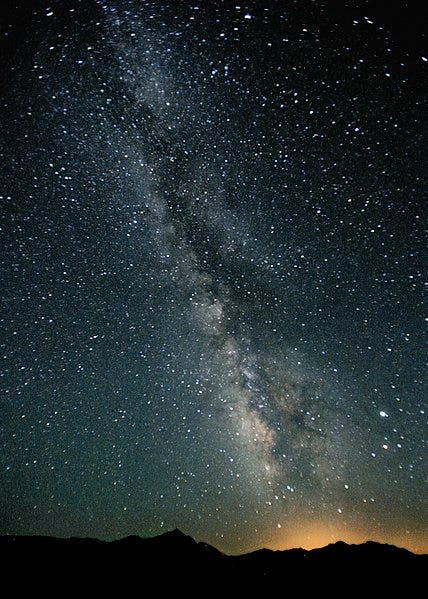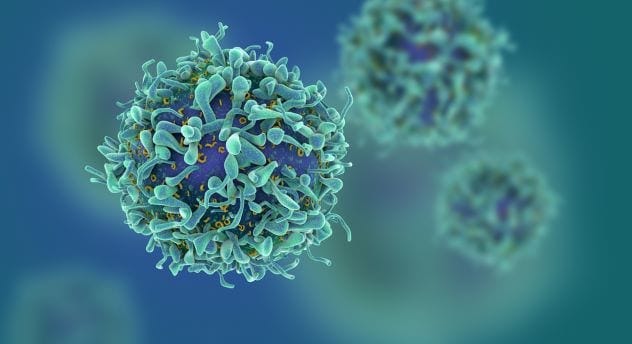This Substack is based on my firm conviction that everything is connected, that all things and creatures unfold along a continuum that doesn’t include any borders. And yet, the differences between us creatures are so profound that they often seem unsurmountable, just look at the current political discourse. Personally, I feel as if I inhabited a universe which is entirely different from the one where MAGA supporters live. But then I thought about the spectacular complexity of each human being, with a unique fingerprint and DNA, no two faces exactly alike, different body shapes and sizes, and when it comes to thoughts and feelings – well, it’s almost surprising that there is any consensus at all. It’s almost as if each individual human being is a small universe.

Which brings me to the relativity of size. We humans live in a space where “big” and “small” are quantities that we intuitively measure according to our own size. A fruit fly or a grain of sand is small, and an elephant is big, so is a skyscraper. Mount Everest is even bigger, rising 8,848 meters or 29,029 feet above sea level. Once the numbers get much larger (or smaller), the average person can’t really picture them any more, they become abstract. The distance from Earth to Sun is 93 million miles (150 million kilometers) – does that mean anything very precise to you? More than one million Earths could fit into the Sun if it was hollow – how about that? And about eight BILLION Suns could fit into the red supergiant star Betelgeuse which is about 640 lightyears away from Earth.1
Do you know what a trillion looks like? My friend Peter Rowntree, an artist and programmer, created this webpage as an illustration:
One trillion dollars, in millions
Take note how long it takes to reach 384 billion, the current net worth of Elon Musk according to Forbes.
Next, let’s look at what was considered the smallest part of matter, the atom: the pre-Socratic Greek philosopher Leucippus (5th century BCE) is considered to be the father of atomism, the theory that all matter is made up of indivisible particles, its basic, infinitely small, building blocks. Well, in 1897 British physicist Sir J. J. Thomson discovered bodies much smaller than atoms, negatively charged particles we now call electrons. A bit later, quantum mechanics detected several other subatomic particles such as the neutrino and the ion, and found out that even the nucleus at the center of an atom consists of protons and neutrons.
Here are some visual aids for the size of an atom:
A typical human hair is about 1 million carbon atoms in width, and a single drop of water contains about 2 sextillion (2×1021) atoms of oxygen, and twice the number of hydrogen atoms.
The theoretical physicist Richard Feynman had a great image for the size of atoms: “If an apple were magnified to the size of the Earth, then the atoms in the apple would be approximately the size of the original apple.”2
Getting back to a more human-centered scale: Around 1970, the plant pathologist Theodor Otto Diener discovered a life-like entity which was smaller than a virus but caused the infectious potato spindle tuber disease. He named it a viroid. It is 1/80th the size of a typical virus; measured in nucleotides, their size varies from 264 to 400 nt. It’s hard to imagine; let’s just say they’re exceedingly tiny.
Let’s first look at a virus to better understand how a viroid differs. It’s a tiny piece of genetic material, or better, information (either DNA or RNA) which is surrounded by a protective coat of protein. It’s way smaller than a bacterium: over a thousand viruses could fit into one E.coli bacterium’s cell! Whether a virus is a life form or not is a matter of debate among biologists. It can’t live or reproduce without a host cell; only when it can get inside of a living cell can the virus replicate and quickly make copies of itself. This process can damage and/or kill the infected cell, and humans, animals, plants, bacteria, and fungi all can be hosts for viruses and get sick. It’s as if you’d pick up a hitchhiker who then turns into a hijacker and takes your keys from you and damages or even wrecks your car.
As an aside: I couldn’t quite accept that anything in the natural world could be nothing but harmful. Viruses are ubiquitous for causing disease, but they must be good for something, I figured. Sure enough, a quick search revealed that “380 trillion viruses are living on and inside your body right now—10 times the number of bacteria, ...our bodies are really superorganisms of cohabitating cells, bacteria, fungi and, most numerous of all, viruses.” Many of them simply live inside of our bodies without making us sick, but a few are actually beneficial: they infect bacteria. They’re called bacteriophages or phages for short, and scientists consider whether phages could replace antibiotics, because so many bacteria have become resistant.
There are other useful things that viruses do, but one in particular deserves to be mentioned: it infects and kills cancer cells. Not only does the oncolytic virus get rid of tumor cells without harming normal cells, it also stimulates an immune response in the body. The technology for targeted therapy (versus radiation and chemotherapy which attacks healthy cells as well) is still new, but more than 25 medicines have been approved by the FDA over the last decade, based on targeted medicine. Of course, the insane move to slash research funding by the current administration will put a stop to such lifesaving studies.

Back to critters even tinier than a virus. A viroid is a much smaller infectious particle, a short stretch of single-stranded RNA which forms a circular or closed continuous loop. It doesn’t have a protein coat but consists only of nucleic acid, a tiny circular RNA molecule. The advances of molecular biology over the last twenty or so years have made the discovery of smaller and smaller life forms such as the viroid possible. Once researchers discovered that viroids didn’t only infect plants (as Diener and his contemporaries thought) but were found in several fungi and some ants, they became more interesting. Soon, the number of known viroids exploded: a report from 2023 identified more than 11,000 viroid-like circular RNA molecules.
Other sub-viral and viroid-like entities are satellites which form symbiotic relationships with helper viruses in order to replicate, and obelisks, discovered in 2024 by Dr. Andrew Fire, Professor of Pathology and Genetics at Stanford University School of Medicine, in human saliva and the human gut. What effects they have on human health and what they depend on to replicate has not been determined so far.

And on the other end? There are some 100 billion galaxies in the observable universe (click on the link above to get a sense for this number). We belong to the Milky Way, an average-sized galaxy (there are some which are 30 times larger). And then there are superclusters, large quasar groups, and other humongous entities.
What’s my point, you’re asking, besides the obvious: anybody who boasts to be the King of the United States and thinks that’s something impressive is a delusional moronic idiot. It has to do with perception and perspective: if I look at the world as if I were the center of the universe, the Big Cheese, my view is distorted. It is what I learned ever since I was able to say my name, since I was a toddler, since I could say “I want this” and “I don’t like that”. But it is time to re-learn, adjust, adapt. Instead of I, the subject, affecting a thing, an object, I should focus on the doing, the process, which connects me with the other. “I feed my dog” becomes “My dog and I interact in feelings and activities as I make sure he’s well-fed”. Yes, this sounds awfully clumsy! But I hope you get the idea. I will elaborate in a future post; for now: it is my firm conviction that we humans have to change our way of perception, in order to see and feel that we’re not separate but are connected with everything else in the world. Maybe the dis-ease of a Trump is a symptom of a collective problem, of an outdated and faulty way of perception which has a myopic perspective. The world is so much bigger — and smaller!








Great piece, a detailed reminder of the import of perspective, and the seamless connections between the sub-microscopic and the near infinite, with us as a single point in that line.
Very enjoyable, thank you Jessica. I was always interested in how big the unobservable universe is. The observable one is, of course, unimaginably large but I do wonder just how far it spreads and does it stop, and if so, how could it? Every fence, every stopping point I can conceive has something on the other side.